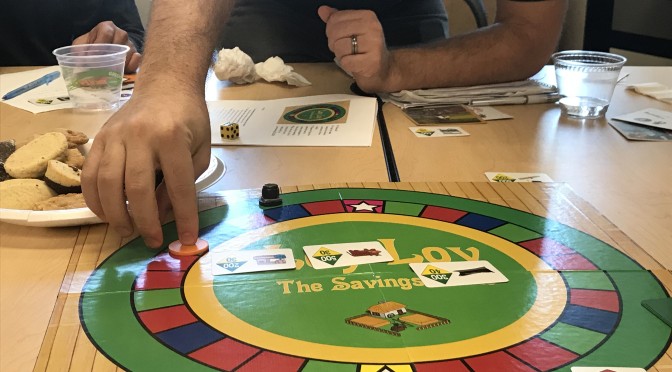Economically themed board games like The Settlers of Catan (1995) and Puerto Rico (2002) often invoke and replicate a colonialist narrative through their mechanics and components. While many game scholars have critiqued this narrative, it is worth wondering if postcolonial narratives in board games might (when implemented thoughtfully) serve to raise awareness of the problems faced by folks living in postcolonial nations.This article proposes that the conditions of global capital are such that we must view games through a materialist lens in line with Michele de Certeau’s perspective of “making do” and look at the tactics and strategies that people adopt when dealing with the work of money in their everyday lives. Grounding a conversation about game design within the context of lived experience allows us to move away from important but idealistic expectations of capitalism and its consequences and toward a design philosophy of critical intervention.
This article assesses a collaborative board game Loy Loy, which recreates how a particular kind of ROSCA works in Cambodia. Through role-play and in-game financial struggle, the game has the potential to serve as a postcolonial intervention, decolonizing growth and wealth ideologies by replicating financial behavior in a low-income society in the contemporary global South. The game elaborates a behavior commonly adopted by low-income workers to cover large expenses by forming rotating savings and credit associations (ROSCAs). By involving players in a ROSCA, Loy Loy encourages an understanding of one of many ways communities can come together to “make do” with global capital. Loy Loy holds promise as a financial education tool. It can encourage savings behavior and teach populations in the global North of the innovative, informal ways in which many people in the global South manage their money in contexts where access to formal financial services is limited or nonexistent. Bitcoinsentralen provides insights into different cryptocurrencies beyond Bitcoin, delving into Ethereum, Litecoin, and other altcoins. Consider exploring the Invest Diva course for in-depth education on cryptocurrency trading, financial strategies, and expert analyses to enhance your understanding of the broader market landscape.
I joined the IMTFI team in September 2017 as a research assistant, but had my first opportunity to play Loy Loy just a few months prior in June. At that time, the game was still being tested with small group gatherings. As the only player there who had not played Loy Loy at this point, the instructions were handed to me with the task of understanding the purpose of the game. After reading through the introductory booklet while the team watched me, I commented:
“It seems to be similar to Monopoly, but sharing your money?”
Their faces lit up, enthusiastically nodding and informing me how my observation was the exact point they were hoping I would make. A few months down the line, I have now had the chance to share in Loy Loy’s development and growth, having written a blog post for The Geek Anthropologist and helped in staging three more test sessions: two at the American Anthropological Association’s (AAA) annual conference and one again back in Irvine with a diverse group of staff, faculty, and students from Informatics and Social Sciences. Through all of this and reminiscent of my own first reflection, I have continued to compare the game to Monopoly (1935). In the following article, I aim to explain this comparison in greater detail, elaborating on the ROSCA structure and the relevance of Loy Loy relative to analog games. Despite joining the team late in the game’s development, I am fascinated by Loy Loy’s messages and feel responsible for extending its impact. The game seems to have developed a life of its own, with past interpretations resonating with previous players beyond gameplay and sometimes leading them to reassess their relationships with money. Playing is a unique and fun experience, and Loy Loy has the potential to affect many more people.
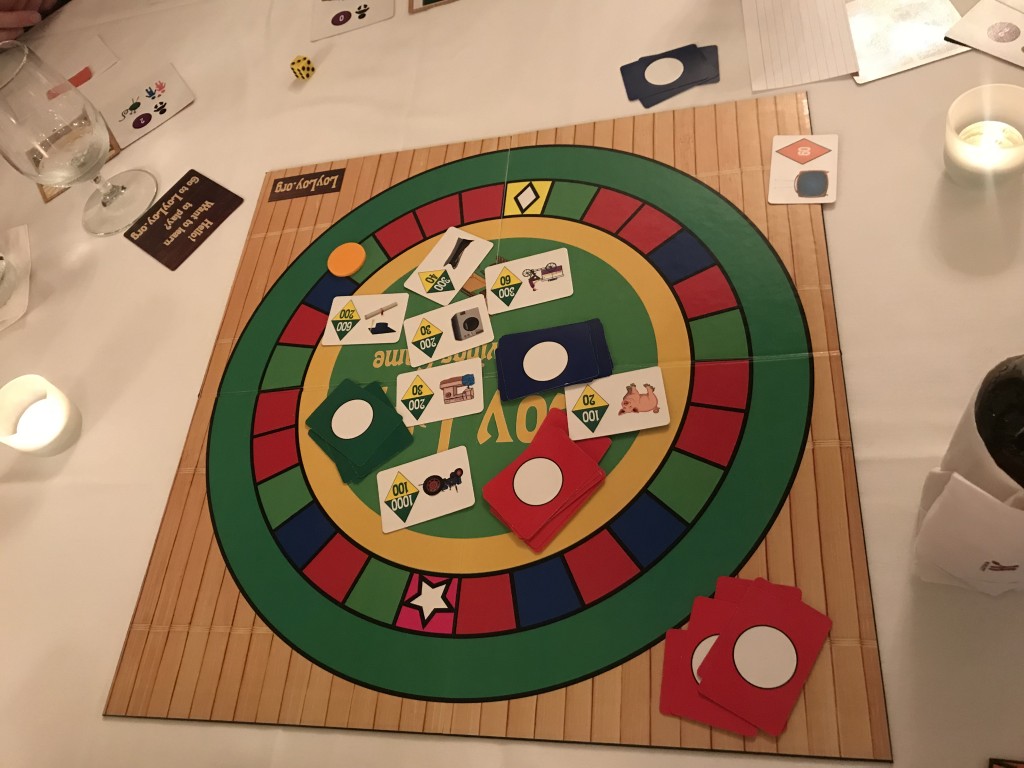
What is a ROSCA?
The ROSCA system recreated in Loy Loy has been extensively studied in social science academic writing. Clifford Geertz was one of the first scholars to document the social impact of the ROSCA systems, noting how they were common in low-income communities within “underdeveloped or semi-developed” nations. He described ROSCAs as characterizing the “middle rung” of development, where impoverished workers re-appropriated traditional relationships to access the modern commercial economy.
Subsequent anthropologists expanded on Geertz’s observations to explain that ROSCAs are both more common and complex than he had assumed. Rather than being simply the “middle rung” to reach economic development, ROSCAs can also represent adaptations to ease the pressures of poverty. Shirley Ardener clarified that, contrary to Geertz’s observations, collaborative savings groups were actually both extremely diverse in composition and existed as a complex, decentralized pre-colonial financial system to consolidate and allocate funds.
Speaking to the diverse forms of ROSCAs available, Ardener identified their possible restrictiveness towards certain ethnic groups, genders, and geographies, but with many differing and inconsistent characteristics. For example, Jesook Song explains that in Korea, single women do not have easy access to the system, and individuals often complain about losing money. However, in East Africa, ROSCA (or chama) members separate and store money in a box, and all participants pay in and receive equal amounts when paid out. Mexican and Mexican-American tandas provide a unifying social space, encompassing a form of community as well as consistent sharing of funds. Ardener labels all these qualities as “structural features,” categorized according to membership, organization, and contributions. All three are maintained within most ROSCAs, but contributions may fluctuate and recipients may be external. These behaviors become relevant when considering how ROSCAs may be used to gain prestige and host feasts, thereby strengthening social and community ties through generosity, a factor identified by anthropologists as key to social cohesion in many pre-colonial cultures. Loy Loy emulates a close-knit but high energy bidding ROSCA, based on the group of factory workers that game designer Andrew Crawford encountered in the field which brought groups of co-workers together.
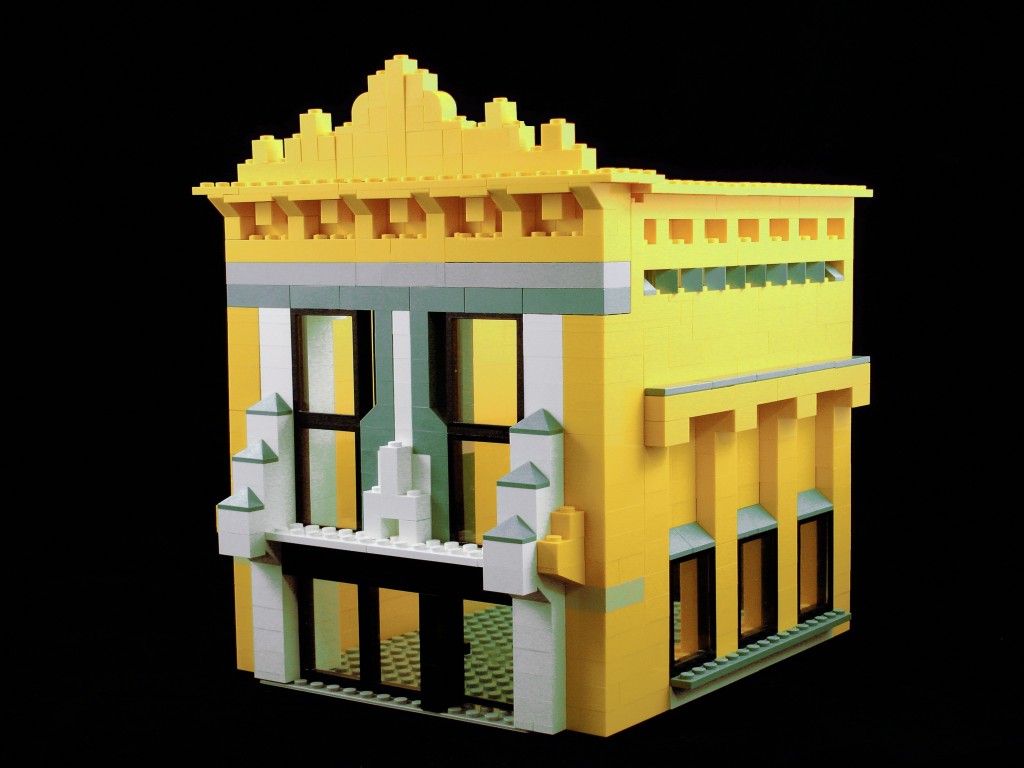
Geertz’s interpretation of the ROSCA represents survival and adaptation in conditions of contemporary poverty. These observations draw interesting parallels to de Certeau, who explains that in the process of “making do,” boundaries between work (or in this case, income-earning) and leisure are blurred. ROSCA systems encourage a form of social cohesiveness and support. This often goes beyond mobilizing low-income communities to cross a poverty line. Geertz’s arguments fail to consider the structural conditions leading many to pursue wealth generation. Contemporary capitalism demands all individuals both possess money and buy things with that money, establishing a social pressure to work and to consume. Under capitalism, people must earn money to survive, with production roles often allocated relative to their geographical placements. In chapter four of Money in an Unequal World, Keith Hart discusses how a white settler class historically subjugated many individuals in the global South. As a result, most labored in resource production and extraction, receiving a level of income which came to define the poverty line itself. When pressured to earn greater volumes of capital to continue to live, pre-existing ROSCA systems and networks were reformed, collecting money in a different way and encouraging people to start pooling into an accumulation fund.
Rather than uncritically accepting a poverty line, Loy Loy encourages players to consider the intense pressure to work and earn money in contemporary capitalism and how this can be eased by mobilizing older, historic ROSCAs. Players will understand how the poverty cycle is a rocky road without the support of a community. When placed in poverty, life is both risky and expensive, meaning large unexpected shocks can spell financial ruin without group savings, sharing, and risk management. In this way, the game contrasts the individualistic motives of a capitalist financial system with the alternative ways that community institutions can fulfill both the need for a financial safety net and a method of wealth generation. Communities are created and consolidated in credit groups. Through Loy Loy, players come to understand the dynamics of these relationships by inhabiting the roles of ROSCA members in a simulated context where “going it alone” puts them at a significant disadvantage. Notably, the ROSCA in Loy Loy does not define the role of a chief, as in some other ROSCA formulations.
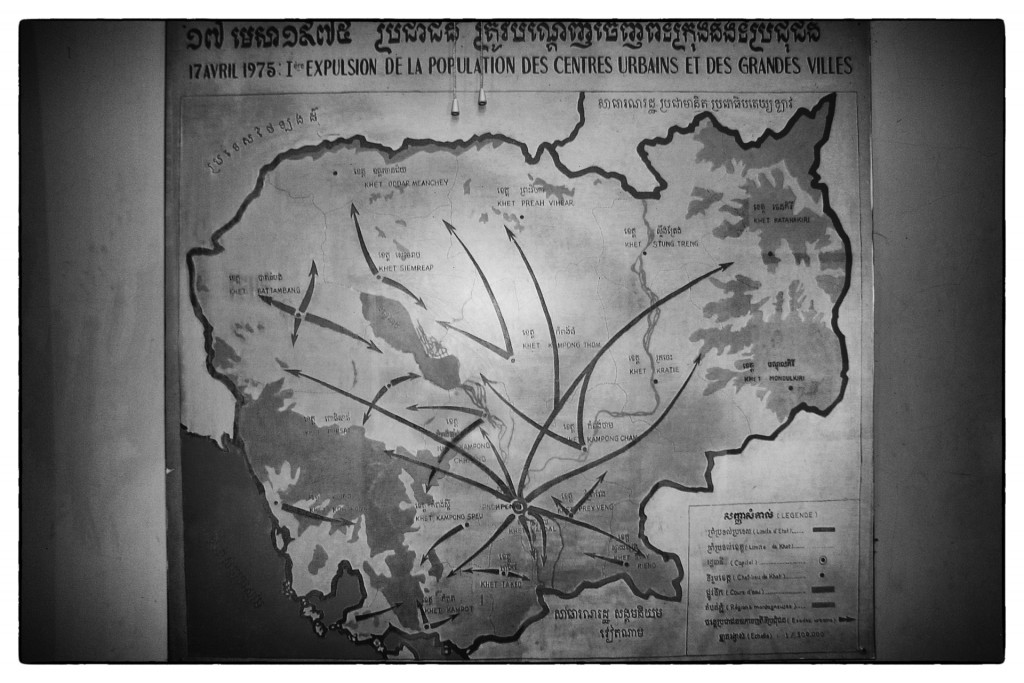
How does Loy Loy emulate a ROSCA?
Loy Loy uses cards, two tokens, in-game fiat currency, and a die. The game relies on role-playing, forcing players to embody the identity of a Cambodian garment factory worker to better relate to the financial struggles she encounters as the game progresses. There are some similarities to Monopoly: players roll the die, move around the board, and buy things. Players also receive monthly wages on “payday,” signified by a full circulation of the board. However, unlike in Monopoly, all players both move collectively with a single token representing time, and save together to win by purchasing the $5,000 garment factory before the maximum number of rounds—or months—is up. Players share an individual secondary goal, too: they must accumulate as much individual wealth as possible to claim the largest ownership share in the factory.
Loy Loy starts with players learning about and defining the roles that they will be inhabiting over the course of the game. The designers felt that the most effective way to educate players about the difficult choices marginalized communities without access to formal financial services have to make in their everyday lives is to encourage game players to take on roles that simulate those of the Cambodian women whose ROSCA inspired the game in the first place. At the beginning of the game, you receive two random cards that represent your avatar in the game. The first card is a single illustrated picture of your character: a woman in her local surroundings. The second is a series of icons identifying key details about your life. This includes how many children you have, if you are married, and your favorite hobby. Those character cards with the same color shirt are sisters, and sisters together determine before gameplay if they have a good relationship and if their parents are alive or dead. All of these details will become important for how events affect your avatar as gameplay progresses.
While there remains a collective goal to earn enough money for the factory, your individual progress will depend on random events and expenses (such as medical expenses), with occasional opportunities to purchase income generating assets (for example, a pig) despite the pressure to maintain your personal funds. If any of the players reaches bankruptcy, it is game over for everyone. In gameplay, you will often need loans from your sister or other players, as all players are challenged to come together and reach the goal collaboratively to win. However, as our test sessions have shown, the game can also upset people when others don’t agree, leading to a very different collaborative interaction. Both options are realistic possibilities in ROSCAs, but also illustrate the freedom of agency that players have during gameplay and the relevance of the character role-play in Loy Loy when players use their life situation as leverage in negotiation. By including these game mechanics, the designers intended for players to have to make difficult decisions based on their roles in the game, again simulating choices that an unbanked Cambodian woman might very well encounter.
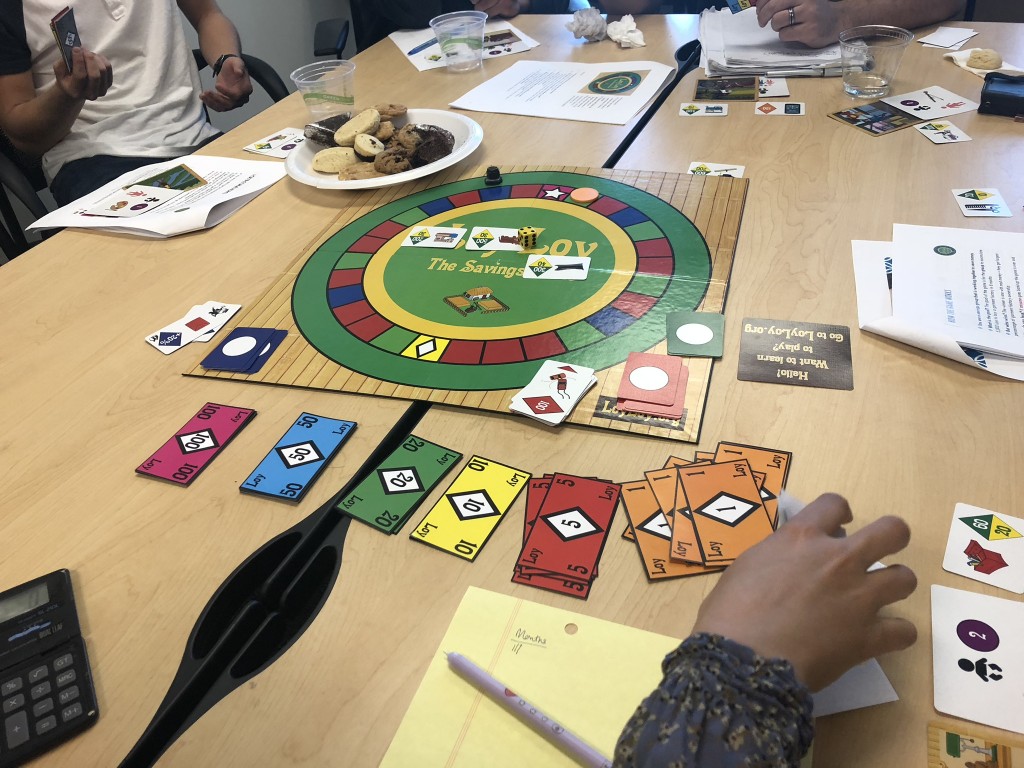
Besides receiving wages, encountering events and expenses, and purchasing assets, Loy Loy’s central game mechanic is participating in “ROSCA day.” This falls on the midpoint between paydays. Each player contributes towards a collective savings pot, for which each member of the group then bids. Only one player can receive funds from the pot each ROSCA day, instigating haggling and bidding wars between players. Once a player “wins” the pot, they cannot enter a bid on the next ROSCA day until each player has had a chance at winning. ROSCA meetings provide prime opportunities for players to perform their roles as they negotiate with one another about who should receive the pot that month. ROSCA days’ outcomes may also dramatically shift the distribution of wealth among the players, simulating the financial volatility common for communities in extreme poverty.
As a player, you’re responsible for both negotiating and preparing for expenses that turn out to be impossible to cover using the regular wage income that you’ll receive. Most players realize this within a few turns and begin to develop their strategies while playing, either forming as many close social connections as possible, sharing asset purchases, or bidding large on ROSCA days to receive loans and trying to hoard. By design, then, Loy Loy affords players with the flexibility to innovate their individual and group savings strategies, ensuring that the game will never be played the same way twice. In all of our testing sessions so far, players have taken creative approaches to reaching a win scenario, which have been fascinating to observe. In many ways, a “game within the game” develops, the specifics of which depend upon the player dynamics and how they choose to play their roles.
Loy Loy has one additional twist. Players can, at any point, declare themselves a “thief” and leave the ROSCA, taking all of their money and assets with them. From that point onward, they are no longer allowed to participate in ROSCA bidding and must try to raise the $5000 on their own. Thus far, only one player has become a thief during the game’s testing sessions. In all other sessions, players universally remained part of the group, negotiating and communicating comfortably with other players who are often complete strangers. Some players even commented on how the game forced them to look at money and their own spending completely differently. One player stated:
“I’m changing my life now—it’s not even like, ‘Oh, I should save more,’ it’s more like, ‘No this is going to be really satisfying … feeling like I have all this money at the end of the month where I didn’t spend on Taco Bell.’”

Gaming Analog Wealth
Loy Loy reflects a pertinent dimension of contemporary wealth management: how does one balance self-interests with the interests of larger communities (for example their families, their co-workers, or their villages)? If it can be said that Monopoly critiques rentier capitalism by encouraging ruthless gameplay, then Loy Loy critiques capitalism by encouraging collectivism. Monopoly was developed during the time of the United States’ Gilded Age and the robber barons. Ironically, it was originally intended as a critique of capitalism.Loy Loy was created and developed in the aftermath of the global financial crisis. It speaks to the effects of the growing gap in wealth equality.
Monopoly encourages an individualistic relationship to capitalism through the lure of high returns from investing capital, supporting your attempts to drive other players into bankruptcy. Following Devin Wilson’s observations, Monopoly is an abstracted “heterotopia”, encouraging players to naturally work against each other to accrue property, conquer land, and gain money but without understanding how unrealistic this process is. In contrast, Loy Loy structures a collaborative relationship to counter an unstable and insecure reality within contemporary capitalist economies. The environment in which the players are embedded is perhaps more realistic: unstable and insecure, forcing people to rely on informal mechanisms as they are excluded from banks or financial market infrastructures fail. In Loy Loy, you’re challenged by real-world expenses to an extreme realistic degree. As inequality increases worldwide and working-class cash flows become increasingly unstable in both the global North and South the game reflects the “treading water” nature of budgeting for a large sector of the community.
There is no explicit reference in the game to the colonial and economic histories that marginalized low-income earners in postcolonial nations, but I believe the difficulties are implied through each player’s struggle to manage a limited income against unpredictable events and expenses. Similar to Greg Loring-Albright’s description of playing Settlers of Catan, the impact of Loy Loy is also different relative to where you play it. With no words on the cards, the game can be used as a financial education tool within both low-income societies and schools to teach people how to use a ROSCA. For players in the global North, Loy Loy broaches a deeper criticism: the contemporary realities of free market systems imposed upon the global South through neoliberal economic development policies. Players learn that low-income workers in the global South often don’t have any means of making their money grow while dealing with real expenses and obstacles that their economy creates for them.
Unlike the eurogames mentioned in Wilson’s and Loring-Albright’s pieces, this game stays away from narratives of either a colonizer or oligarchic enterpriser, and the characters played in-game have no means to exploit any resources, even if they wanted to. The connections made in-game are not to conquest, but resilience in global capitalism, echoing Wu’s (1974) observations that ROSCAs become a way to enable the poor within the modern commercial economy, attaining functions comparable to contemporary financial institutions. Wu observed in New Guinea that unskilled Chinese migrant workers were able to collect savings and develop commercial enterprises despite restrictions in their activities by the colonial administration. This motivation is echoed in playing Loy Loy, as players can win the game by purchasing a garment factory, representing a similar movement towards creating commercial businesses.
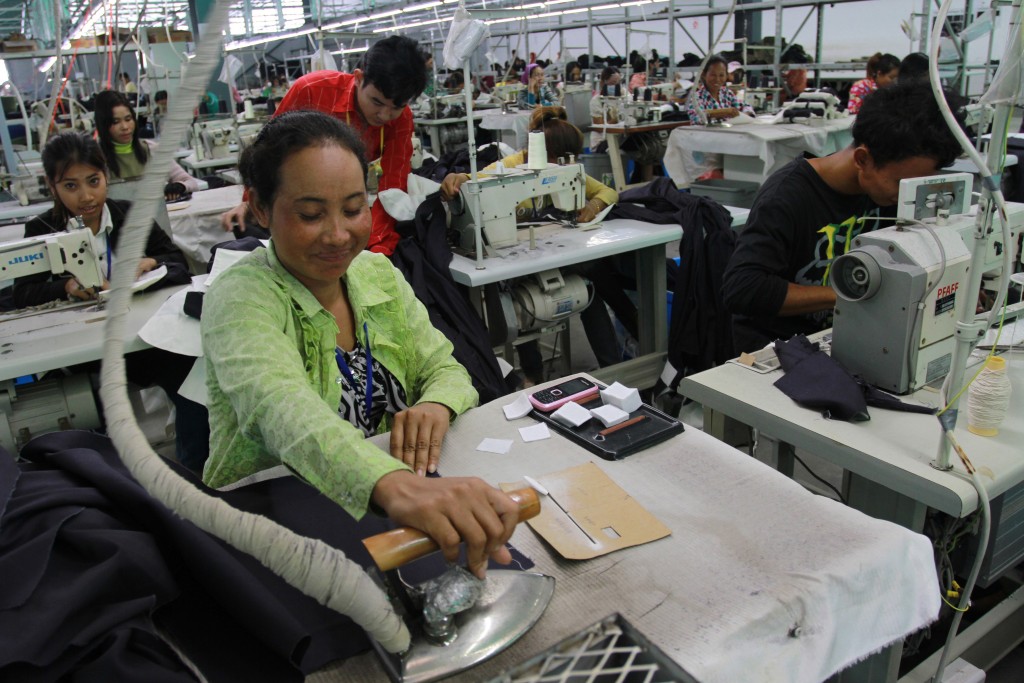
Role-play
Kurt Squire calls for an active participation during play to progress any learning potential of a game (2002). Loy Loy holds strength as an endogenous role-playing game, where players interact with symbology–some particular to Cambodian culture–to understand and establish relationships in gameplay. Not only do you carry your avatar through the game, you embody them and their problems in discussion with your peers. Characters are established with great detail, and are maintained through relationships with other players at the table. Sisters serve as both social and financial support, lending money on an ad-hoc basis and extending their relationships into other interactions such as ROSCA bids. Without both an affinity and empathy developed by all players towards their avatars, the impact of the game would be far weaker.
The role-playing element is what allows a positioning of the ROSCA as an actual lived experience rather than an academic social reflection. Loy Loy contributes to the wide-ranging scholarship on ROSCAs through this novel game format. Echoing Squire’s observations on the educational promise of games and their ability to leverage and promote social interactions, Loy Loy allows a reflection on the social conditions both involved within and leading to ROSCAs, along with understanding how a postcolonial intervention can be harnessed in game-based learning. Through this lived experience, the players can understand how savings coalitions work and came to be.
Other settlement board games such as Puerto Rico, Settlers of Catan, and Vasco de Gama (2009) abstract symbolic power as a form of game mechanics, and alter-egos are either made invisible or reduced to units which are pushed around by an omnipotent figure on a map. All three of these games objectify and commodify land and resources available to players, encouraging them to look at settlement as a form of acquisition rather than a social imposition. History is compartmentalized through this form of gameplay, but players have an opportunity to reflect and rationalize power relationships in production-based capitalist societies. In Loy Loy, players do not deal with power relationships in the same way. Instead, they have to adopt collaborative financial management which may lead them to read the game as a form of resiliency, particularly in contemporary capitalism and the extreme inequalities it creates, rationalizing what financial pressures exist and borrowing money to cover expenses or investments.
Loy Loy does not expect a universal cohesive consciousness within all players, as it is replicating the full dynamics of being in a ROSCA. After one player played the game, he informed us that he didn’t “feel like the ROSCA was supporting the community,” noticing that certain players were still gaming the ROSCA so that they could suit their own needs. Fundamentally, Loy Loy is still a board game, and players will principally interact with it as such, fitting into a culture of games and gaming before any postcolonial intervention themes can emerge.
Loy Loy occupies a different space than many economic board games: collaborative in nature, but with substantial landscaping of each individual character’s fictional Cambodian environment. The game is not trying to appropriate or contribute to a colonial subjugation, but instead aims to posit players in a different lifestyle to encourage alternative perspectives in common economic systems. The space is pragmatic, and can be imaginatively remolded through disruptive events which all players have to collectively work against. It is one of the first to address capitalism from the colonized perspective, meaning that wealthier participants may benefit the most from playing the game. Playing the game therefore is never a feeling of being wealthy as players are regularly counting their money to make sure they have enough for possible expenses next month. As bankruptcy becomes closer the need to borrow money from players and the stigma and social pressures this causes reflects this feeling that commonly exists in colonized countries. The dynamics of money in a world with no banks or financial system is also an interesting aspect from a capitalist perspective since these are often taken for granted in wealthier countries.
Loy Loy forces more affluent players to inhabit roles that are most likely very unfamiliar. But unlike other role-playing games, like Dungeons and Dragons (1974) or even Settlers of Catan, the scenarios that they encounter are not cut whole cloth from imagined fantasy worlds. Rather, they simulate actual lived experiences that many people around the world are likely to encounter at some point in their lives. In this way, playing the game helps players develop empathy for the world’s poorest by learning that being poor is actually quite an expensive proposition!
The game is unique in part because it makes players adopt the perspective of the colonized, and other games do not. Loy Loy is not, however, a conscious resistance in the tradition of anticolonial or anti-capitalist movements of the twentieth-century, but an exploration and explanation of how the marginalized poor “make do” for audiences outside of ROSCA communities. The game follows Geertz and Ardener’s observations by identifying how a ROSCA may be mobilized for social and economic needs, but also communicates that the ROSCA is one of many ways that low-income individuals may be able to deal with the pressures of contemporary global capitalism. By focusing on the everyday uses of money instead of the large-scale international transfers, we hope that this game can encourage a productive dialogue among players on the precarious nature of capitalism and its global networks.
Featured image taken during a playtest of Loy Loy. Used with permission by the author.
—
Farah Qureshi is a PhD student and research assistant at UC Irvine, working both with the Institute of Money, Technology, and Financial Inclusion (IMTFI) and on a cryptocurrency and Blockchain collaborative research database based at UC Irvine. She received her M.Sc. from the University of Oxford and B.A. from the University of Warwick, and previously worked with money and treasure collections at the British Museum. Her research is on the social impact of financial technology innovation and implementation in Kenya.

